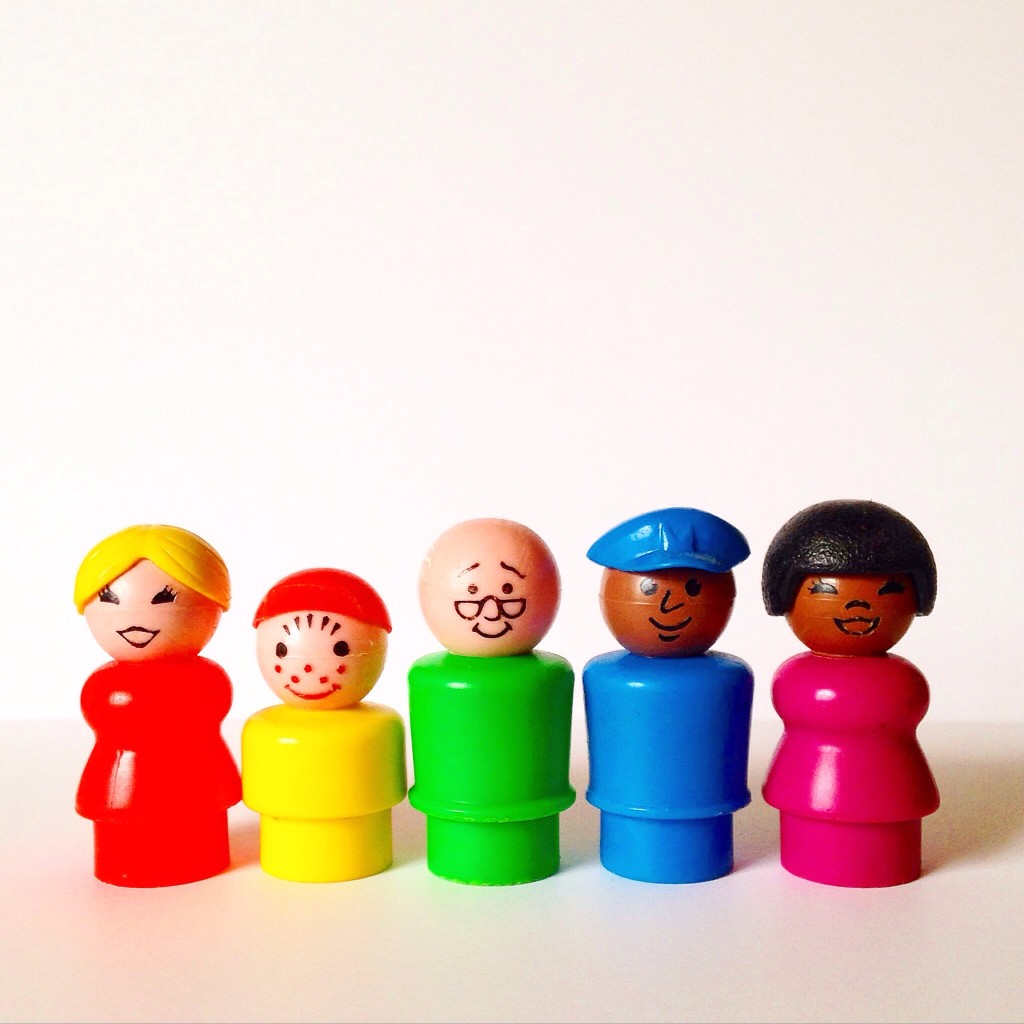At Gallaher Edge, we focus on the interplay between a variety of key elements that together create healthy, mature corporate cultures. We apply the science of human behavior to organizations, using a comprehensive lens to look at issues like Diversity in the workplace. We help companies build the foundation that allows people to feel comfortable with perspectives that don’t match their personal experiences. The events of 2020 brought Diversity to the attention of leaders who may have ignored racial inequities in their corporate cultures before. The value of diversity in offering broader perspectives, driving innovation and creativity, and promoting better decision making is undisputed. Today, many leaders are working to get diversity and inclusion right. But where to start? At Gallaher Edge, we believe that Diversity requires three key elements: Differences, Respect, and Inclusion. Let’s explore the role of Differences and Respect in creating Diversity.
Differences
It feels too simplistic to say that you must have differences to have Diversity in your culture, so we’ll elaborate. Specifically, we define differences as possessing a variety of ideas, backgrounds, perspectives, ethnicities, skills, beliefs, genders, and age groups as well as many other dimensions that contribute to making each of us unique. In the context of an organization, it is honoring the uniqueness in each person that contributes to our human drive to belong. When you enter into a space where people are different from one another and are encouraged to be, it makes it easier for you to feel that you belong.
Research has confirmed this effect. An article in Scientific American highlighted that when teams have created space for different viewpoints, it contributes positively to our human driver of belonging because it invites each person to be their authentic selves. This same study also highlighted how differences between us lead to the emergent trait of diversity. This happens because even perceived differences (social or demographic) lead group members to anticipate different viewpoints. Because they expect to face different perspectives, they put extra effort in, leading to better results.
Confirmation Bias
Differences enable humans to reduce confirmation bias. Confirmation bias refers to our human tendency to seek out information that aligns with what they already believe, and subconsciously filter out information that conflicts with what they believe. This creates a reinforcing loop where your beliefs can become even more entrenched, and it is even harder to see a different perspective or challenge what you think you already know. This means you might continue to look at the same problem in the same way, and struggle to see a viable solution. When you include people with different ideas, skills and backgrounds, then as a team, you’re less likely to suffer from the poor decision making that results from confirmation bias.
Link Humans together with Respect
We define respect as treating others with the esteem due to all humans. This definition feels particularly important to us because respect, like many words, means different things to different people. Some believe that respect is something that one earns through accomplishments or credentials. Others believe that respect is a commodity that is given and received through behaviors such as arriving on time, or cultural rituals such as bowing in some Asian cultures. But we are talking about respect at the most foundational human level – the acknowledgment that each human has worth simply because they exist.
This is a perspective that, unfortunately, not all humans support. Essentially, some people believe that not every human deserves respect. However, we feel this view has a negative impact on culture. In a session with one of our clients, we were using a psychometric instrument to uncover how the leaders feel about “people.” One of the leaders emailed us to find out what we meant by “people.” He argued that if he was answering for all of humankind, he would answer one way, but if he was answering for his coworkers, he would answer another way. As you might imagine, his scores on the instrument suggested that he did not have a very high regard for others’ level of significance.
If we accepted his perspective, we could choose to talk about the respect that is due to each person because they have been invited into your organization, suggesting that there are “others” out there who are not worthy of respect because they lack knowledge, expertise, or skills, or because of how they behave and mistakes they have made. But there are two key reasons why this is problematic. The first is that how you feel about “people” as a whole is always going to have carry-over effects on how you regard “people” in an organization – especially as it grows, and you lose the ability to form a deep relationship with each person.
The second reason this is problematic is that knowledge and skill gaps happen in organizations regularly, as industries evolve, strategies change, and new roles emerge. So, looking at what one “brings to the table” as a means to decide if they are worthy of respect would mean that respectful treatment is fickle and inconsistent, which significantly detracts from feelings of belonging. Similarly, all humans are imperfect and make mistakes, so if you choose to use one’s mistakes as a reason to no longer treat them with respect, that creates an environment that detracts from a sense of belonging.
The Emergence of Diversity in Cultures
Diversity emerges as a trait in organizational culture when differences are welcomed and people are linked through respect. In all the research about the benefits that diversity brings to organizations, the key differentiating variable is respect. A homogenous team will never yield the maximum performance possible. Heterogeneity on teams is necessary to maximize performance. But a heterogeneous team can yield the worst performance or the best performance – the distinction between the two is respect for those differences. The ability to have respect for differences of opinions, different backgrounds, different skills, and different ideas is crucial to maximizing organizational performance. If you don’t have a culture of respect, that’s a problem.
One of our clients asked for our help because they had a lingering culture of disrespect. The organization was fairly homogenous historically, both demographically and also when it comes to world views. Because, historically, nearly everybody in the company had similar viewpoints when it came to politics, for example, even the leaders in the organization would convey disrespectful messages about people who held a different political viewpoint. When this kind of disrespect is pervasive, and/or comes from the top, it creates an environment where people feel that they need to hide who they really are or what they really believe, if they feel that their world view won’t be respected, meaning they, personally, wouldn’t be respected.
The absence of respect squashes diversity, and the presence of respect allows it to flourish. At Gallaher Edge, we help companies to improve diversity and inclusion, starting with welcoming differences and creating a culture of respect. First and foremost, it is the right thing to do, but also, for businesses that get it right, building diversity can lead to gains in innovation, productivity and profits. Differences, Respect, and Inclusion are the three links that create Diversity in mature cultures. In our upcoming blog post, we will explore Inclusion, the third key to Diversity. Contact us to learn more about how our team can guide you through a unique collection of experiences to align self, teams, and culture from the Inside Out.
Ready to take your leadership to the next level? Get your FREE copy of my eBook, Level Up: 3 Steps to Be a Better Leader. Click here to download!




